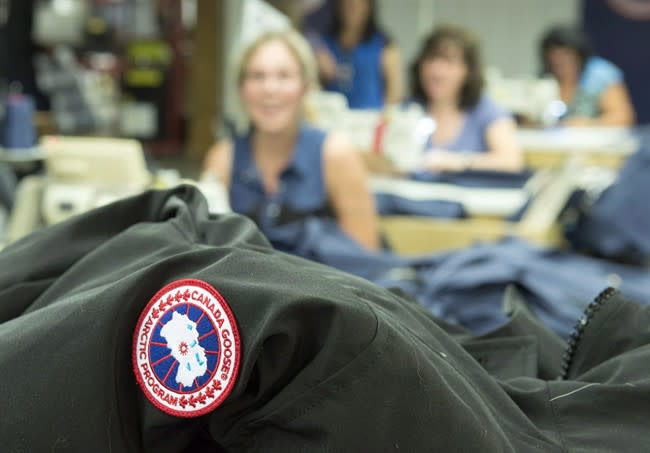 Daily Brew
Daily BrewThe Canada goose: 5 reasons why the national icon is also a national nemesis

The Canada goose holds its rightful place as one of our top national icons alongside such symbols as maple syrup, the double-double, moose, beavers and canoes. The migratory bird, with its long black-and-white head and neck, brown body and webbed feet is beautiful. The birds have adorned national commemorative coins and stamps, inspired countless Canadian artists, and adorn kitschy Canadiana loot from mugs to T-shirts. The Canada goose is undeniably Canadian—but it is also undeniably often a nuisance this time of year.
While they look graceful up in the sky in a V-formation flying south for the winter, when they return, they tend to be anything but. The often cranky birds loudly honk, aggressively hiss and leave piles of green droppings across the Great White North every spring. Here’s our take on why a national icon is also, at times, a national nemesis:
1. Green poop. Need we say more?

Ah, springtime. It’s the time of year when the sun starts shining, the flowers start blooming … and the ground is often covered in A LOT of green poop. Turns out, Canada geese (Branta canadensis) produce an astonishing amount of, ahem, excrement. National Geographic says just 50 geese can produce two and a half tons of excrement in a year. The good news? All that green poop is likely harmless, Environment Canada’s extremely detailed Q&A on the Canada goose says there is no direct evidence that goose droppings pose a danger to human health. But all those droppings are just the start.
2. The incessant honking
The government estimates that there are at least 7 million Canada geese present in North America and the population is stable or increasing. The birds are known for their very loud, continuous honking. If a Canada goose has parked itself right outside your window, you’ll likely just have to live with it. They are protected under the Migratory Birds Convention Act, 1994, so if the bird is causing serious issues you may be able to get a permit to ‘deal’ with the problem. If you encounter a goose and all that happens is some loud honking, consider yourself lucky.
3. Surliness
The Canada goose is currently a contender to become our national bird. The Giller Prize-winning author Will Ferguson acknowledges they are “big, bad-tempered birds (that) will chase you across a public park simply because they don't like the looks of you.” But he thinks their sassy nature should be celebrated by crowning the Canada goose an official Canadian icon. The poor people being chased/attacked by Canada geese in the countless videos found on the Internet may disagree. And the birds are causing a flap south of the border, too.
4. Hurting cross-border relations

Relations between Prime Minister Stephen Harper and President Barack Obama can be strained at times and the Canada goose is certainly not helping matters. Flocks of Canada geese are unloading such massive amounts of excrement at the National Mall that the U.S. government is seeking input on how to deal with the problem by April 22. Then there was the time some Americans mounted “an all-out war” on Canada geese after a flock struck US Airways Flight 1549. The words ‘Canada goose’ are being sullied in the U.S., and abroad.
5. Fowl-ing up our international reputation

Canadians are generally seen by the world as a polite, apologizing, nature-loving lot. But the ubiquitous Canada Goose parkas have changed that. In fairness to the goose the parkas are not actually filled with Canada goose feathers, but with a blend including Hutterite white goose down. Birds of a feather flock together, and many of the people who like the popular parkas are giving Canada a bad rep. The now-defunct Tumblr blog Canada Douche succinctly shows how one of our unofficial national symbols has become synonymous with a certain type of person, who is generally impolite, doesn’t care much for nature and is more likely to say they are #sorrynotsorry than actually apologize, ever.
Does the Canada goose still deserve to become our official national symbol? Share your thoughts in the comments below.

